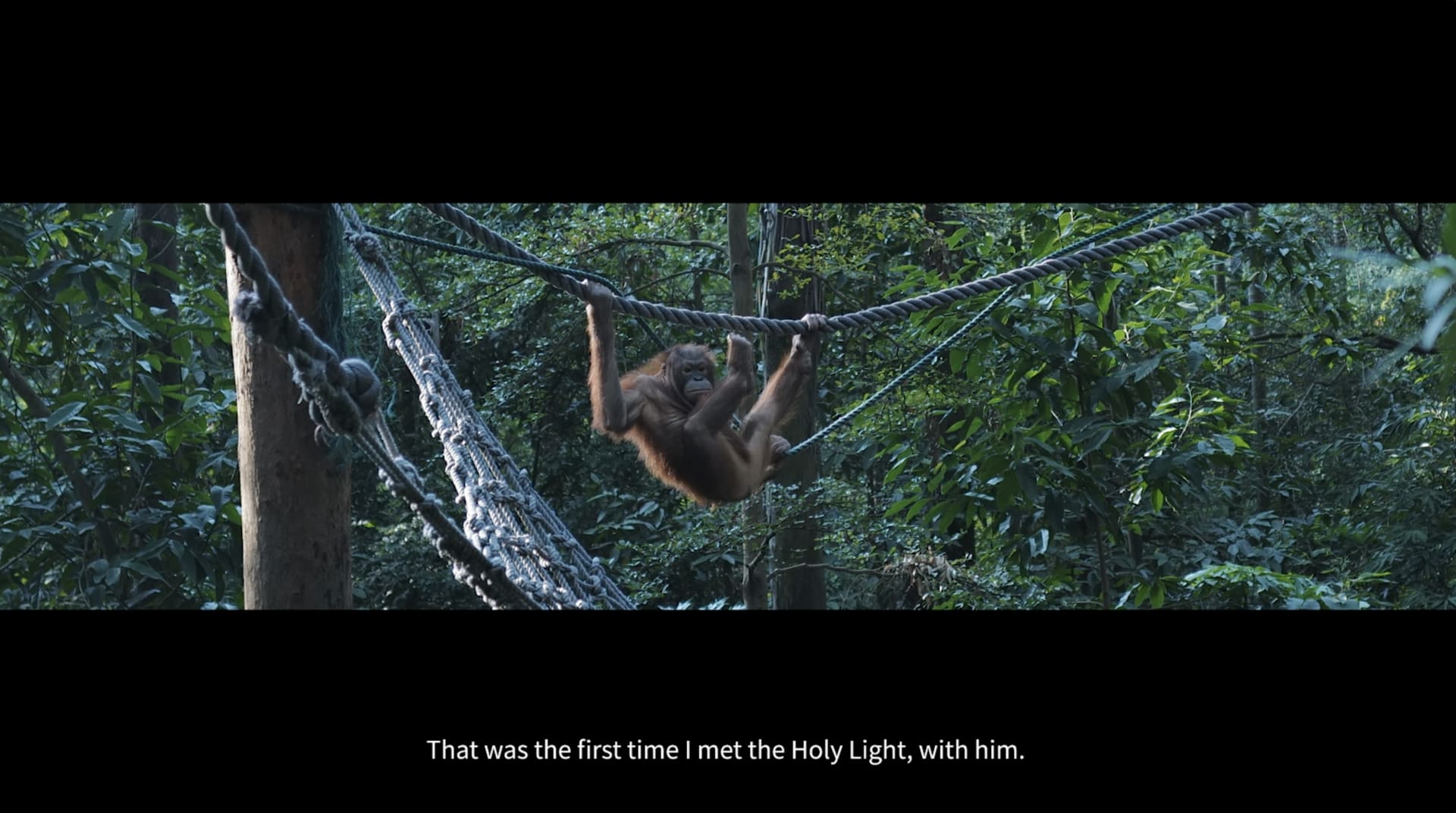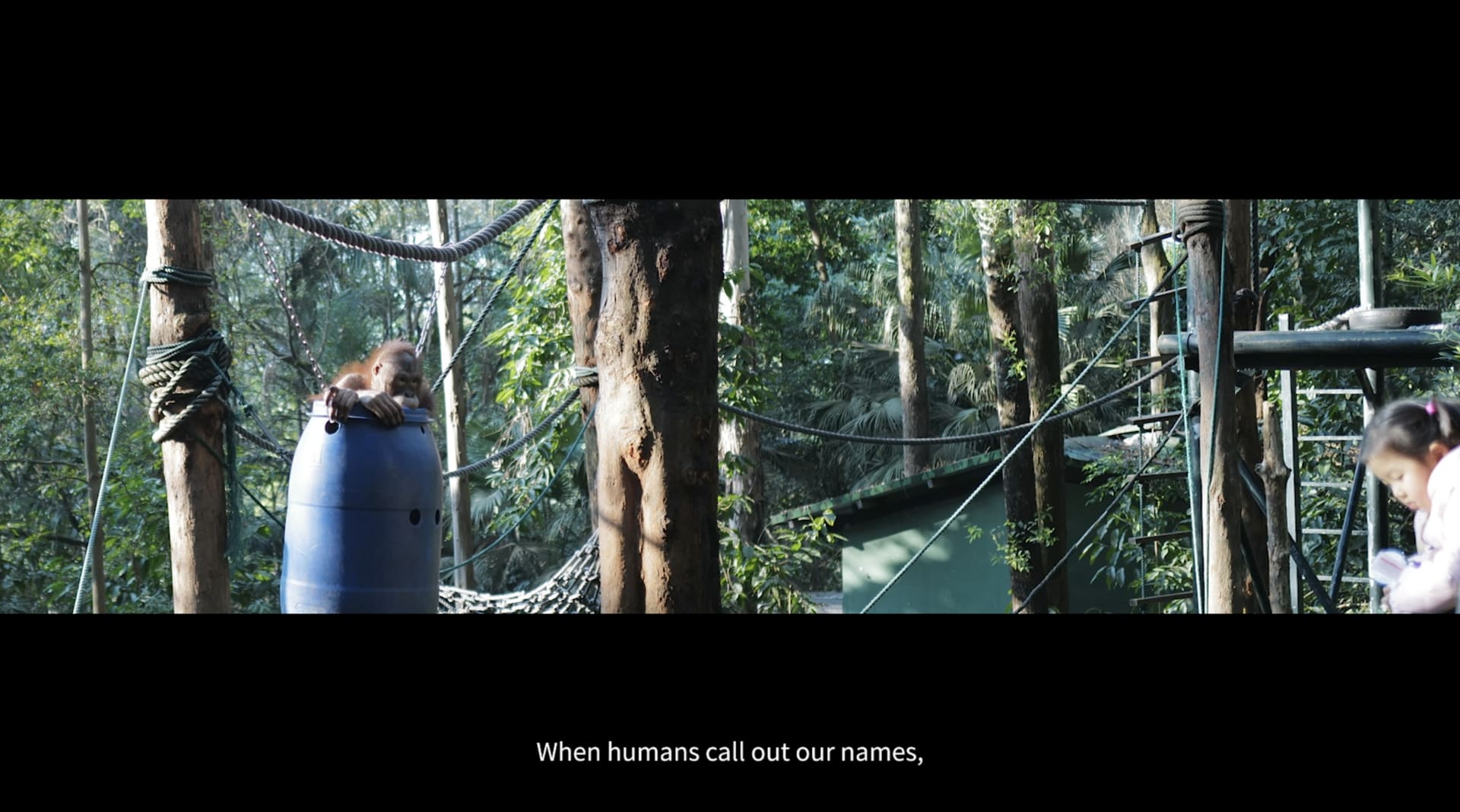In my creation, I have persistently pursued the interconnections between the culture, geography, individuals, and religion of my hometown in Northeast China, exploring their realms of existence and survival. Through the medium of moving images, I have extensively revised the textual narratives centered around the shark motif, striving to strike a delicate balance between the "foreign" and the "local." By adopting the perspective of the shark and employing a first-person narrative approach, I try to forge a connection between the realms of reality and the spiritual world. Besides, I have made a series of modifications to the creation of my short stories, establishing a profound intertextual and contrasting relationship with the shark news, ultimately introducing a collective thematic exploration encompassing freedom and slavery, deception and truth, as well as survival and mortality.
Finally, I sought to conclude the overarching theme with an installation : the Ascension Ritual. Within my works, the protagonists inevitably confront the outcome of death, constrained by historical epochs and human agency. The introduced Ascension Ritual serves as the culminating chapter of the entire project, leaving an open-ended conclusion—whether the soul finds solace still remains an uncertain.

























